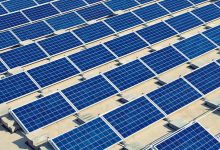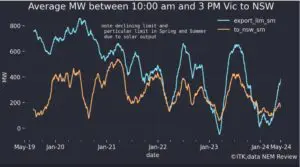The global renewable energy industry has overcome the growing pains faced by emerging industries, and has emerged, de-risked sector that will achieve steady growth in coming decades, an assessment by analysts S&P Global Ratings has found.
In a new analyst report published by S&P Global on emerging trends and risks within the global energy transition, the global market analysis firm has predicted a positive future for the renewables sector, driven by falling costs and enabled by emerging energy storage technologies, and that investment of more than $10 trillion will be needed through to 2040 in clean energy, to meet a 2 degrees warming limit.
According to S&P Global Ratings, over the last two decades, the renewable energy sector has successfully achieved successful de-risking of large-scale solar and wind projects and is expected to grow at an average annualised rate of 7 per cent each year through to 2040.
“Worldwide investments in renewable energy infrastructure assets have been astronomical and at quite a sprint, totalling $2.6 trillion from 2010 through 2019 according to Global Trends in Renewable Energy Investment 2019, by BloombergNEF (BNEF) and the United Nations Environment Programme,” S&P Global Ratings said in its assessment.
“Globally, renewable capacity additions outpace fossil fuel with solar emerging as the dominant technology. Key drivers of this meteoric growth have been government and corporate policies (as expressed through FITs, tax incentives, and PPAs) to meet clean energy goals, as well as declining installation costs, with economies of scale that are leading to grid parity.”
S&P found that the growth in new renewable generation capacity has significantly outpaced additions from fossil fuels and nuclear power, and that this trend is likely to continue as the costs and risks associated with renewable technologies are further reduced.

While S&P sees strong growth in the renewables sector continuing, it expects that fossil-fuelled generators will continue to deliver the majority of electricity in 2040, but there is the potential that the renewables sector will see substantially stronger growth if governments put in place policies consistent with limiting global warming to no more than 2 degrees.
Global warming of two degrees would see a substantial increase in the level of investment in renewable energy projects, with S&P global predicting that twice as much new renewable electricity generation will be produced under a 2-degree scenario, compared to the current ‘business as usual trajectory’.
Under the more ambitious scenario, the global share of electricity generation provided from fossil-fuels would fall to as low as 30 per cent by 2040.
To achieve this, S&P Global Ratings estimates that an additional $5.2 trillion in renewable energy investment will be needed through to 2040, in addition to a ‘business as usual’ forecast for investment of $6.9 trillion
S&P Global Ratings sees the crucial challenges that remain for the renewable energy sector can be addressed by new enabling technologies, particularly energy storage. While the technology costs and construction risks of renewable energy projects have been significantly reduced, the ability to successfully manage the strong growth in variable energy supplies will emerge as the next challenge that the sector will face.
Innovation, and repeating the de-risking process for energy storage and demand response technologies will be the key to continued growth in renewables, according to S&P Global. This will be key to avoiding shortfalls in the supply of electricity on the one hand, and limit the need the curtail renewable energy generators on the other.
S&P Global Ratings described the growing impact of curtailment as a ‘cannibalisation risk’ where strong investment in renewable energy projects like solar is outpacing investment in network and storage infrastructure, causing both new and existing projects to reduce output and forego potential revenues.
“With renewables coming of age, S&P Global Ratings expect that while low risk, fixed price contract structures may still be available, new structures with a degree of merchant risk, the rise of corporate power purchase agreements and counterparty risks, new technologies, and new policies for renewables will add to the complexity of renewable credit,” S&P Global Ratings said in a statement.
“For solar this is even clearer since solar generally operates at the same time of day. Specifically for PV technology, this implies that the higher the penetration of PV assets generating, the lower the prices at the generation times. Hence, the capture price entitled for a PV asset could be well lower than a wind asset generating during the night. Consequently, this cannibalization effect could undermine the profitability of PV producers.”
However, S&P Global Ratings aintains a positive outlook for the sector and is confident that the emergence of a large-scale deployment of financially viable energy storage infrastructure will be possible, and help address constraints on renewables in global energy markets.
This includes astronomical growth in large energy markets, including a 10-fold increase in the United States market for battery storage by 2023.
“The end game for renewables remains linked to innovation and technology, as battery storage development, automation of grids and aggregating of assets, and dynamic supply management of renewables should ultimately transition renewables from an intermittent source to closer to base-load,” S&P Global Ratings said.











